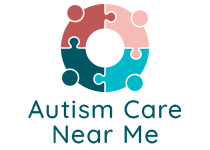As a parent, it’s heartbreaking to watch your child struggle with social interaction, communication, and repetitive behaviors. You may wonder if your child has autism spectrum disorder (ASD), a condition that affects one in 54 children in the U.S. The sooner you can get an assessment and intervention, the better your child’s chances of improving their social, emotional, and cognitive development.
This blog post will detail what autism can look like in children of different ages, how to get an assessment for ASD, and how treatment can help. If you’re in need of a functional behavior assessment in Maryland, there are resources available that can help.
An Overview of Autism
Autism is a developmental disorder that affects communication, social interaction, and behavior. While there is no cure for autism, early intervention can improve outcomes for children with ASD. Autism can present differently in children, but some common signs may include:
- Delayed speech and language skills
- Avoiding eye contact
- Lack of interest in playing with others
- Repetitive behaviors
- Difficulty adapting to changes in routine
Infants and toddlers may present signs of autism, such as delayed or absent language development, failure to respond to their name, and lack of social smiling. In preschoolers, you may notice social difficulties, difficulty in imaginative play, inflexibility, and delayed language skills. School-age children with autism may have rigid routines and interests, problems with peer relationships, and difficulty with communication. Teenagers with autism may face problems with understanding and expressing emotions, maintaining friendships, and adapting to social situations.
What to Do if You Suspect Your Child Has Autism
If you suspect your child has autism, the first step is to consult your pediatrician. Along with conducting a physical exam, your pediatrician will refer you to an expert in autism assessment. A comprehensive assessment will involve cognitive, speech, and language testing. A functional behavior assessment can also be done to examine the environmental conditions that influence behavior and helps identify strategies to support positive behavior.
After a definitive diagnosis, the next step is to develop an individualized treatment plan for your child. Early and ongoing intervention can make a big impact on a child’s development. Interventions may include behavioral and communication therapies, social skills training, and medication for co-occurring conditions. Family resources for autism in Maryland
can make a difference, as well.
In addition to formal interventions, home support for autism is critical to promote your child’s development. You can help your child with autism thrive at home by creating a predictable and structured environment, providing opportunities for social interaction, encouraging your child’s interests, and communicating in a clear and consistent manner. You may also consider joining support groups for parents of children with autism to connect with other families who are navigating the same challenges. Seeing the same challenges your family might face duplicated or even triplicated in other families can be encouraging, providing a sense of camaraderie and understanding.
Reach Out to a Treatment Provider near You Today
While autism can present unique challenges for families, with early intervention and support, children with ASD can have a bright future. If you’re concerned that your child may have autism, trust your instincts and seek an evaluation from a qualified professional. Remember that every child with autism is unique and requires individualized support. By becoming informed about autism and accessing resources such as family resources for autism in Maryland, you can become an advocate for your child’s needs and help them reach their full potential.







